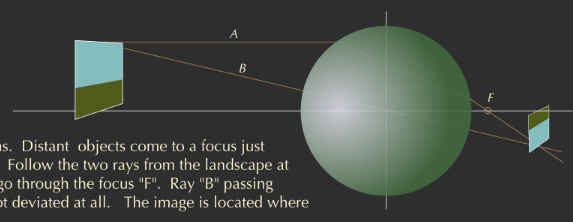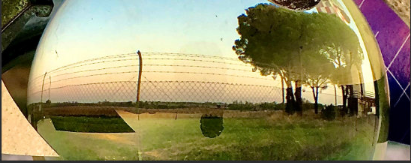Campbell-Stokes Belt of Venus
The Campbell-Stokes Belt of Venus: Exploring a Phenomenon in the Sky
Have you ever noticed a pinkish band in the sky during dawn or dusk? This captivating phenomenon is known as the "Belt of Venus," and it adds a touch of beauty to the atmospheric optics. The Belt of Venus is a pinkish band that appears above the dark sky near the horizon, just after sunset or before sunrise. In this article, we will delve into the intricacies of this phenomenon and explore the fascinating world of the Campbell-Stokes Belt of Venus.
What Causes the Belt of Venus?
The Belt of Venus gets its name from the Roman goddess of love and beauty. It is a result of the interplay between scattered reddened sunlight and the blue sky. As the sun sets or rises, sunlight scatters in the atmosphere, causing the blue light to disperse. The remaining red and pink hues combine to create the enchanting Belt of Venus. This phenomenon is most pronounced when viewing the sky from locations with minimal light pollution.
Understanding the Upside-Down View
To capture the Belt of Venus, many photographers use a Campbell-Stokes sunshine recorder. This instrument consists of a glass ball that acts as a lens, focusing distant objects onto a surface inside the recorder. Due to the properties of the lens, the image formed is inverted. This means that the landscape appears upside-down within the glass ball.
The inverted view inside the Campbell-Stokes sunshine recorder creates a unique perspective, almost like a miniature world encapsulated within the glass. Photographers can capture this mesmerizing sight, showcasing the delicate beauty of the Belt of Venus against the backdrop of the dark sky.
The Campbell-Stokes Recorder: A Device from a Bygone Era
The Campbell-Stokes sunshine recorder, named after its inventors Campbell and Stokes, is a simple yet robust device used to measure the duration and times of "bright" sunshine. This instrument, reminiscent of a cherished age of engineering, is still in use at manual weather stations today.
The recorder consists of a glass sphere that focuses direct sun rays onto a card marked with hours. As the sun moves across the sky, the focused rays burn a path on the card, indicating the duration of sunshine. The instrument requires adjustments to account for the changing position of the sun throughout the year, making it an intriguing tool for weather enthusiasts.
Imperfections in the Lens
While the Campbell-Stokes recorder is a remarkable device, it is not without its imperfections. The glass sphere used as a lens is far from perfect, exhibiting a phenomenon known as spherical aberration. This means that rays of light that are further from the axis of the sphere come into focus closer to the lens. To mitigate this effect, the lens aperture is often stopped down, reducing the impact of spherical aberration and improving the quality of the recorded data.
Conclusion
The Campbell-Stokes Belt of Venus is a captivating atmospheric optics phenomenon that adds a touch of beauty to our skies during dawn and dusk. The pinkish band, created by scattered reddened sunlight against the blue sky, creates a stunning visual display for those fortunate enough to witness it. Through the use of instruments like the Campbell-Stokes sunshine recorder, we can further explore and understand this enchanting phenomenon. So next time you find yourself admiring the beauty of a colorful sky at sunrise or sunset, take a moment to appreciate the wonder of the Campbell-Stokes Belt of Venus.

Near dawn at Viterbo Airport Weather Station, Italy. The glass ball of a Campbell-Stokes sunshine recorder shows an inverted view of the earth's shadow and pink Belt of Venus lingering in the western sky. A capture by Marco Meniero.
The dark sky close to the horizon is dark air shaded from sunlight by the planet itself.
Topping it is a pinkish band, the "Belt of Venus", a mixture of scattered reddened
sun rays backed by blue sky


Why upside-down?
The glass ball is a powerful lens. Distant objects come to a focus just outside the rear surface at "F". Follow the two rays from the landscape at left. Horizontal ray "A" must go through the focus "F". Ray "B" passing through the sphere centre is not deviated at all. The image is located where they cross.
The image is so close to the ball that Marco's camera keeps the nearby ball and its image of the distant landscape sharply in focus - Almost as though there is a miniature world inside the glass.


Campbell-Stokes Recorder
The Campbell-Stokes sunshine recorder registers the duration and times of 'bright' sunshine. This wonderfully simple device, evocative of a lost but cherished age of robust and long-lasting engineering is still in use at manual weather stations.
Direct sun rays, focussed by the glass sphere, burn a path on a card marked with hours.
The instrument developed by Campbell in 1853 had a water filled bulb at the centre of a hemispherical wooden bowl. From winter solstice to summer solstice the sun's distance from the celestial equator (declination) changes from -23 to +23 degrees and makes slightly different burn paths each day. Thus sunshine could be estimated for six months before changing the bowl.
Stokes replaced the bowl by guides to hold daily cards. The water filled sphere had already been replaced by solid glass.
The recorder must be levelled and set to local latitude. There are many more necessary adjustments giving delight for those fond of metal over touch screens.

Imperfect Lens
A sphere is a far from perfect lens. Rays far from the axis come to focus closer to the sphere. This effect, appropriately alled "spherical aberration" is present in most simple lenses and is reduced by stopping down the lens aperture.
Note: this article has been automatically converted from the old site and may not appear as intended. You can find the original article here.
Reference Atmospheric Optics
If you use any of the definitions, information, or data presented on Atmospheric Optics, please copy the link or reference below to properly credit us as the reference source. Thank you!
-
<a href="https://atoptics.co.uk/blog/campbell-stokes-belt-of-venus/">Campbell-Stokes Belt of Venus </a>
-
"Campbell-Stokes Belt of Venus ". Atmospheric Optics. Accessed on April 25, 2024. https://atoptics.co.uk/blog/campbell-stokes-belt-of-venus/.
-
"Campbell-Stokes Belt of Venus ". Atmospheric Optics, https://atoptics.co.uk/blog/campbell-stokes-belt-of-venus/. Accessed 25 April, 2024
-
Campbell-Stokes Belt of Venus . Atmospheric Optics. Retrieved from https://atoptics.co.uk/blog/campbell-stokes-belt-of-venus/.